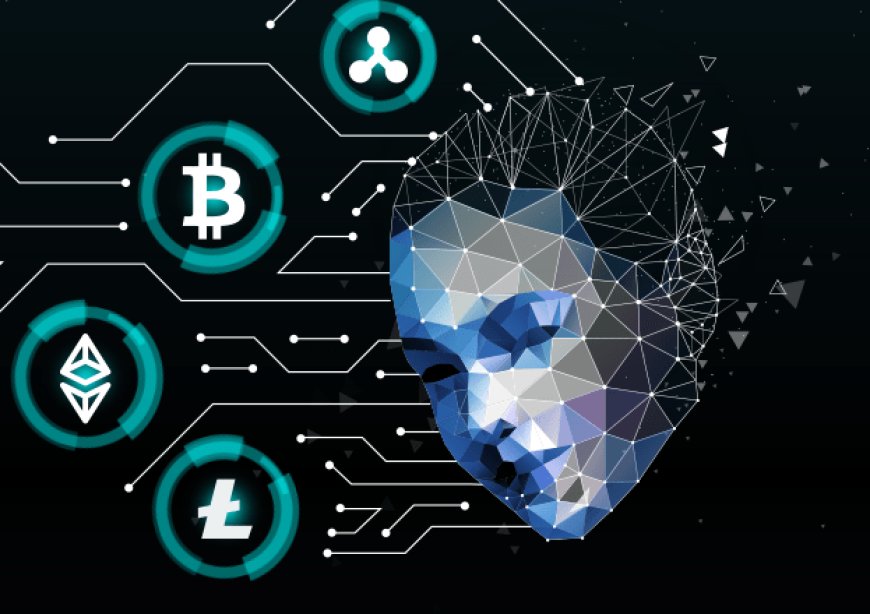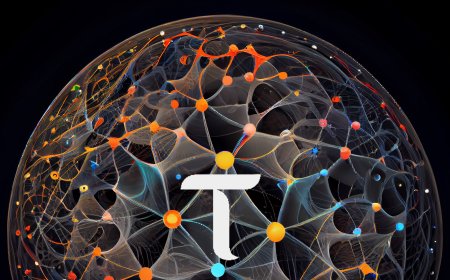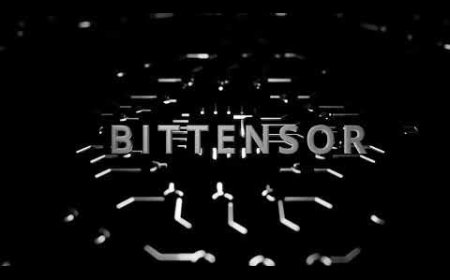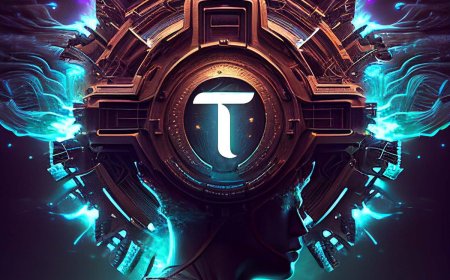BitTensor: Pioneering Decentralized AI Network for the Future
BitTensor is a groundbreaking project in the realm of decentralized AI, co-founded by Jake Steves. It's an AI network designed to harness the power of blockchain and machine learning, aiming to create an open and accessible AI ecosystem for everyone.

BitTensor's Vision
Jake Steves, co-founder of BitTensor, shares that this project stems from recognizing the importance of decentralization in AI development. Instead of letting AI remain in the hands of a few large companies, BitTensor aims to create an open system where everyone can participate and benefit from the development of this technology.
Steves emphasizes that BitTensor's main goal is to maximize the network's "intelligence bandwidth," allowing people to access diverse perspectives and forms of intelligence. This contrasts with centralized systems, which tend to converge on a specific viewpoint.
Structure of the BitTensor Network
The BitTensor network consists of three main components:
- Miners: These are nodes in the network that perform machine learning tasks such as sentence completion, text summarization, response ranking, text-to-image generation, etc. Miners use their computational power to perform these tasks and receive Tau tokens as rewards.
- Validators: They ensure miners perform the assigned tasks correctly. Validators assess miners' performance over time, determining their rankings and scores. This result is sent to the blockchain to achieve consensus.
- Stakers: These are holders of Tau tokens who can stake their tokens for validators. This helps increase the validator's influence in the network.
How BitTensor Works
BitTensor uses a market-based incentive system to attract computational resources and intelligence into the network. Miners are encouraged to improve their output quality to receive more rewards. Validators are motivated to assess accurately to maintain credibility and attract more stakers.
Jake Steves explains that this mechanism creates an "incentive gradient" that drives the network to continuously improve and develop. This makes BitTensor more efficient in extracting and synthesizing intelligence from various sources.
Advantages of BitTensor over Centralized AI Systems
- Decentralization: BitTensor is not controlled by a single organization, minimizing the risk of monopoly and censorship.
- Accessibility: Anyone can participate in the network as a miner, validator, or staker.
- Diversity: The network leverages intelligence and perspectives from various sources, producing more diverse and comprehensive results.
- Scalability: BitTensor can naturally grow in scale and capability as more people participate.
- Transparency: Network operations are recorded on the blockchain, ensuring transparency and verifiability.
Potential Applications of BitTensor
BitTensor can be applied in various fields:
- Software Development: Developers can leverage BitTensor's API to integrate AI capabilities into their applications.
- Research: Researchers can use the network to conduct complex experiments and data analysis.
- Education: BitTensor can be used to create personalized learning tools and teaching support systems.
- Content Creation: Creators can use BitTensor to generate multimedia content such as text, images, and videos.
- Business Analysis: Businesses can use the network to analyze market trends and make data-driven decisions.
Challenges and Solutions
Despite its potential, BitTensor faces several challenges:
- Security: To ensure network safety, BitTensor is gradually implementing security measures and decentralizing control.
- Scale: As the network grows, maintaining performance and reliability is challenging. BitTensor is continuously improving its infrastructure to meet increasing demands.
- Governance: The transition to a decentralized governance model (DAO) is being done carefully and step-by-step to ensure system stability.
- Competition: With the emergence of open-source AI models from large companies like OpenAI, BitTensor needs to innovate constantly to maintain its competitive position.
The Future of BitTensor
Jake Steves shares some development plans for BitTensor's near future:
- Decentralizing the sudo key in the coming months.
- Implementing a voting system for network proposals.
- Expanding different input modalities for the network.
- Improving the API to make it easier for users to interact with the network.
- Upgrading the website interface and branding.
Steves emphasizes that BitTensor is transitioning from an experimental network to a practical AI system. He hopes to soon see many applications and companies built on BitTensor's platform.

BitTensor's Approach to AI Development
One of the key aspects that sets BitTensor apart is its approach to AI development. Unlike traditional centralized models, BitTensor leverages the collective intelligence of its network participants. This approach has several advantages:
- Continuous Improvement: The incentive structure encourages constant refinement and innovation from miners and validators.
- Diverse Dataset: By drawing from a wide range of sources, BitTensor can potentially access more diverse and comprehensive datasets than centralized systems.
- Adaptive Learning: The network can quickly adapt to new information and trends, as miners compete to provide the most relevant and accurate outputs.
- Collaborative Development: The open nature of the network allows for collaborative problem-solving and shared advancements.
The Role of Tau Token in the Ecosystem
The Tau token plays a crucial role in the BitTensor ecosystem:
- Incentivization: It rewards miners for their computational contributions and validators for their assessment work.
- Governance: Token holders can participate in network decisions, moving towards a more decentralized governance model.
- Access: Tau tokens can be used to access network resources and services.
- Value Capture: As the network grows and improves, the value of the Tau token is expected to reflect the network's overall utility and adoption.
Comparative Advantage in the AI Landscape
When compared to other AI development approaches, BitTensor offers several unique advantages:
- Open Participation: Unlike closed AI research labs, anyone can contribute to and benefit from BitTensor's development.
- Resource Efficiency: By leveraging distributed resources, BitTensor can potentially achieve greater computational power at a lower cost than centralized systems.
- Resistance to Censorship: The decentralized nature makes it difficult for any single entity to control or censor the network's outputs.
- Transparency: The use of blockchain technology provides a transparent record of the network's operations and developments.
Challenges in Adoption and Integration
While BitTensor presents an innovative approach to AI development, it also faces challenges in widespread adoption:
- Technical Complexity: The decentralized nature of the system can make it more complex for average users to understand and interact with.
- Regulatory Uncertainty: As a new form of AI development and deployment, BitTensor may face regulatory challenges in various jurisdictions.
- Integration with Existing Systems: For businesses and developers, integrating BitTensor into existing AI workflows and systems may require significant adaptation.
- Performance Consistency: Ensuring consistent performance across a decentralized network of diverse participants can be challenging.
The Potential Impact on AI Ethics and Governance
BitTensor's decentralized model could have significant implications for AI ethics and governance:
- Democratization of AI: By allowing wider participation, BitTensor could help democratize AI development and reduce the concentration of power in the hands of a few tech giants.
- Diverse Ethical Perspectives: The diverse participant base could lead to AI systems that consider a wider range of ethical perspectives and cultural contexts.
- Transparent Development: The open nature of the network could allow for greater scrutiny and accountability in AI development processes.
- Community Governance: As the network moves towards a DAO model, it could pioneer new forms of community-driven AI governance.
Conclusion
BitTensor represents a significant step in the democratization of AI. By creating a decentralized, open, and accessible network, BitTensor is challenging the traditional AI development model dominated by large companies. With its ambitious vision and dynamic community, BitTensor has the potential to become one of the most important projects in the AI field in the coming years.
However, BitTensor's success will depend on its ability to overcome technical, governance, and market challenges. If the project can continue to develop and attract broader community participation, it could play a crucial role in shaping the future of AI, ensuring that the benefits of this technology are shared more widely and equitably.
As the AI landscape continues to evolve rapidly, projects like BitTensor offer an alternative path forward, one that prioritizes openness, collaboration, and decentralization. Whether this approach will ultimately complement or compete with more traditional AI development models remains to be seen, but it undoubtedly adds a valuable perspective to the ongoing dialogue about the future of artificial intelligence.
Source : @The Bittensor Hub.
















